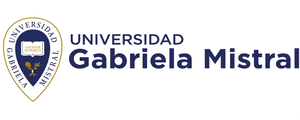Gabriela Mistral University Repository
The Gabriela Mistral University Library has developed the following Academic Repository in order to preserve, disseminate and make available the full-text contents of the academic production developed by the different actors in the academic and research field of the University.
The UGM University at the beginning of the year 2017 incorporated the UCINF University, also adding that collection where we find memories, theses, degree works, academic magazines, speeches, books, digital and sound files. Contact: [email protected]
The UGM University at the beginning of the year 2017 incorporated the UCINF University, also adding that collection where we find memories, theses, degree works, academic magazines, speeches, books, digital and sound files. Contact: [email protected]
Terapia de realidad virtual de miembro superior para pacientes con accidente cerebro vascular : Revisión sistemática
| dc.contributor.advisor | Barría Sáez, Rudy, Profesora guía | |
| dc.contributor.advisor | Olguín Huerta, Cristián. Profesor Metodológico | |
| dc.contributor.author | Barrera Fuentes, Anais | |
| dc.contributor.author | De la Carrera Morales, María Fernanda | |
| dc.contributor.author | Gaete Sikic, Ljubiza | |
| dc.contributor.author | López Jara, Jorge | |
| dc.contributor.author | Rivas Olguín, Karol | |
| dc.date.accessioned | 2022-06-09T17:53:49Z | |
| dc.date.available | 2022-06-09T17:53:49Z | |
| dc.date.issued | 2021 | |
| dc.identifier.uri | http://repositorio.ugm.cl/handle/20.500.12743/2170 | |
| dc.description.abstract | Autores no autorizan su publicación completa | es_ES |
| dc.description.abstract | RESUMEN: Introducción: El ACV es la tercera causa principal de muerte y discapacidad en todo el mundo siendo aproximadamente el 85% de los pacientes quien luego de sufrir un ACV tienen una discapacidad residual en el miembro superior que afecta su calidad de vida. El uso de la RV en el ACV es un entrenamiento intensivo que puede incluir juegos de fácil uso como Nintendo Wii y jintronix generando resultados positivos a nivel de miembro superior. Objetivo: Determinar la efectividad de la terapia de realidad virtual en la función de miembro superior en pacientes adulto mayor con Accidente Cerebrovascular. Método: Revisión sistemática que incluye estudios de 3 a 6 meses posterior a un ACV, los cuales recibieron terapia convencional y terapia basada en realidad virtual, teniendo como variables la prueba de caja y bloque (BBT), medida de independencia funcional (FIM), prueba de brazo de investigación de acción (ARAT), y Fugl Meyer (FMA). Resultados: Los 10 estudios demostraron que no existe diferencia significativa. En relación con la FIM presenta un valor de -0.35 puntos con un intervalo amplio entre -6.88 a 6.18. La prueba BBT establece un valor de 2.15 puntos con un intervalo de -1.22 a 5.51, lo cual demuestra una tendencia hacia la realidad virtual. La prueba ARAT muestra un resultado total de 4.48 puntos con un intervalo de 0.79 a 8.16 lo que establece según la diferencia de la media, dando a favor de la terapia con realidad virtual. En la prueba de Fugl Meyer establece que, si existe una diferencia estadísticamente significativa, dando como resultado una puntuación de 5.52 puntos, con un intervalo de 0.56 a 10.47, inclinándose hacia la terapia con realidad virtual. Conclusión: En base a los estudios metaanalizados, se infiere que la terapia con realidad virtual es efectiva como tratamiento complementario para la rehabilitación en pacientes secuelados de un accidente cerebro vascular, no obstante, es necesario realizar más estudios que demuestren que la realidad virtual podría ser una opción de terapia única, que cumpla los objetivos planteados por terapeutas en la clínica. | |
| dc.description.abstract | SUMMARY: Introduction: Stroke is the third leading cause of death and disability worldwide, with approximately 85% of patients who after suffering a stroke have a residual disability in the upper limb that affects their quality of life. The use of VR in stroke is an intensive training that can include easy-to-use games like Nintendo Wii and Jintronix generating positive results at the upper limb level. Objective: To determine the effectiveness of virtual reality therapy on upper limb function in elderly patients with Stroke Method: Systematic review that includes studies 3 to 6 months after a stroke, which received conventional therapy and virtual reality-based therapy, having as variables the box and block test (BBT), functional independence measure (FIM), test of action research arm (ARAT), and Fugl Meyer (FMA). Results: The 10 studies showed that there is no significant difference. In relation to the FIM, it presents a value of -0.35 points with a wide interval between -6.88 to 6.18. The BBT test establishes a value of 2.15 points with a range of -1.22 to 5.51, which shows a trend towards virtual reality. The ARAT test shows a total result of 4.48 points with an interval from 0.79 to 8.16, which is established according to the difference from the mean, giving in favor of virtual reality therapy. In the Fugl Meyer test it establishes that, if there is a statistically significant difference, resulting in a score of 5.52 points, with an interval of 0.56 to 10.47, leaning towards virtual reality therapy. Conclusion: Based on the meta-analyzed studies, it is inferred that virtual reality therapy is effective as a complementary treatment for rehabilitation in patients after a stroke, however, more studies are needed to show that virtual reality could be an option single therapy, which meets the objectives set by therapists in the clinic. Key Words: Stroke, upper extremity, virtual reality | |
| dc.description.sponsorship | Seminario de Tesis. Kinesiólogos. Universidad Gabriela Mistral. Facultad de Ciencias de la Salud. | es_ES |
| dc.language.iso | es | es_ES |
| dc.publisher | Universidad Gabriela Mistral | es_ES |
| dc.rights | Attribution-NonCommercial-NoDerivs 3.0 United States | * |
| dc.rights.uri | http://creativecommons.org/licenses/by-nc-nd/3.0/us/ | * |
| dc.subject | Extremidad superior | es_ES |
| dc.subject | Realidad virtual | es_ES |
| dc.subject | Accidente cerebrovascular | es_ES |
| dc.subject | Ancianos | es_ES |
| dc.title | Terapia de realidad virtual de miembro superior para pacientes con accidente cerebro vascular : Revisión sistemática | es_ES |
| dc.type | Thesis | es_ES |




